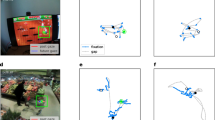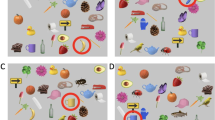Abstract
We present an approach for recovering surface shape from the occluding contour using an active (i.e., moving) observer. It is based on a relation between the geometries of a surface in a scene and its occluding contour: If the viewing direction of the observer is along a principal direction for a surface point whose projection is on the contour, surface shape (i.e., curvature) at the surface point can be recovered from the contour. Unlike previous approaches for recovering shape from the occluding contour, we use an observer thatpurposefully changes viewpoint in order to achieve a well-defined geometric relationship with respect to a 3-D shape prior to its recognition. We show that there is a simple and efficient viewing strategy that allows the observer to align the viewing direction with one of the two principal directions for a point on the surface. This strategy depends on only curvature measurements on the occluding contour and therefore demonstrates that recovering quantitative shape information from the contour does not require knowledge of the velocities or accelerations of the observer. Experimental results demonstrate that our method can be easily implemented and can provide reliable shape information from the occluding contour.
Similar content being viewed by others
References
Aloimonos, Y. 1990. Purposive and qualitative active vision,Proc. 10th Intern. Conf. Patt. Recog., Atlantic City, NJ, pp. 346–360.
Aloimonos, Y., Weiss, I., and Bandyopadhyay, A. 1987. Active vision,Proc. 1st Intern. Conf. Comput. Vis., London, pp. 35–54.
Bajcsy, R. 1988. Active perception,Proc. IEEE 76(8): 996–1005.
Ballard, D.H. 1989. Behavioural constraints on animate vision,Image Vis. Comput. 7(1):3–9.
Ballard, D.H. 1989. Reference frames for animate vision,Proc. 11th Intern. Joint Conf. Artific. Intell., Detroit, pp. 1635–1641.
Ballard, D.H. 1991. Animate vision,Artificial Intelligence 48:57–86.
Ballard, D.H., and Brown, C.M. 1992. Principles of animate vision,Comput. Vis. Graph., Image Process.: Image Understanding 56(1):3–21.
Ballard, D.H., and Ozcandarli, A. 1988. Eye fixation and early vision: Kinetic depth,Proc. 2nd Intern. Conf. Comput. Vis., Tarpon Springs, FL, pp. 524–531.
Barrow, H.G., and Tenenbaum, J.M. 1981. Interpreting line drawings as three-dimensional images,Artificial Intelligence 17:75–116.
Blake, A., Curwen, R., and Zisserman, A. 1993. A framework for spatio-temporal control in the tracking of visual contours,Intern. J. Comput. Vis., 11(2):127–145.
Brady, M., and Yuille, A. 1984. An extremum principle for shape from contour,IEEE Trans. Patt. Anal. Mach. Intell. 6(3):288–301.
Brady, M., Ponce, I, Yuille, A., and Asada, H. 1985. Describing surfaces,Comput. Graph. Image Process. 32:1–28.
Brooks, R.A. 1986. A robust layered control system for a mobile robot,IEEE J. Robotics Automat. 2(1): 14–23.
Brooks, R.A. 1989. A robot that walks: Emergent behaviors from a carefully evolved network,Proc. IEEE Robotics Automat. Conf., Scottsdale, AZ, pp. 692–696.
Cipolla, R., and Blake, A. 1992. Surface shape from the deformation of apparent contours,Intern. J. Comput. Vis. 9(2): 83–112.
Come, S.D., and de Boor, C. 1972.Elementary Numerical Analysis. McGraw-Hill: New York.
Coombs, D. and Brown, C. 1993. Real-time binocular smooth pursuit,Intern. J. Comput. Vis., 11(2): 147–164.
doCarmo, M.P. 1976.Differential Geometry of Curves and Surfaces. Prentice-Hall: Englewood Cliffs, NJ.
Giblin, P., and Weiss, R. 1987. Reconstruction of surfaces from profiles,Proc. 1st Intern. Conf. Comput. Vis., London, pp. 136–144.
Grosso, E., and Ballard, D.H. 1993. Head-centered orientation strategies in animate vision,Proc. 4th Intern. Conf. Comput. Vis., Berlin, pp. 395–402.
Hager, G., and Mintz, M. 1987. Searching for information,Proc. Workshop on Spatial Reasoning and Multi-Sensor Fusion, Charles, IL, pp. 313–322.
Horaud, R., and Brady, M. 1987. On the geometric interpretation of image contours,Proc. 1st Intern. Conf. Comput. Vis., London, pp. 374–382.
Horn, B.K.P. 1986.Robot Vision. MIT Press: Cambridge, MA.
Kanade, T., 1981. Recovery of the three-dimensional shape of an object from a single view,Artificial Intelligence 17:409–460.
Koenderink, J.J. 1984. What does the occluding contour tell us about solid shape?,Perception 13:321–330.
Koenderink, J.J. 1990.Solid Shape. MIT Press: Cambridge, MA.
Kriegman, D.J. 1993. Personal communication.
Krotkov, E. 1987. Focusing,Intern. J. Comput. Vis. 1 (3):223–237.
Krotkov, E., and Bajcsy, R. 1993. Visual behaviors for reliable ranging: Cooperating focus, stereo, and vergence,Intern. J. Comput. Vis., 11(2):187–203.
Kutulakos, K.M., and Dyer, C.R. 1993. Global surface reconstruction by purposive control of observer motion.Proc. Conf. Comput. Vis. Patt. Recog., Seattle, WA, to appear.
Leyton, M. 1988. A process grammar for shape,Artificial Intelligence 34:213–247.
Malik, J. 1987. Interpreting line drawings of curved objects,Intern. J. Comput. Vis. 1(1):73–103.
Marr, D., and Nishihara, H.K. 1978. Visual information processing: Artificial intelligence and the sensorium of sight,Technology Review 81:2–23.
Nelson, R.C., and Aloimonos, Y. 1989. Obstacle avoidance using flow field divergence,IEEE Trans. Patt. Anal. Mach. Intell. 11(10): 1102–1106.
Papanikolopoulos, N.P., Khosla, P.K. and Kanade, T. 1993. Visual tracking of a moving target by a camera mounted on a robot: A combination of control and vision,IEEE Trans. Robotics Automat. 9 (1):14–35.
Ponce, J. and Chelberg, D. 1987. Finding the limbs and cusps of generalized cylinders,Intern. J. Comput. Vis. 1(3): 195–210.
Ponce, J., Chelberg, D., and Mann, W.B. 1989. Invariant properties of straight homogeneous generalized cylinders and their contours,IEEE Trans. Patt. Anal. Mach. Intell. 11(9):951–966.
Richards, W., Koenderink, J.J., and Hoffman, D.D. 1988. Inferring 3D shapes from 2D silhouettes. InNatural Computation, W. Richards, ed., pp. 125–136, MIT Press: Cambridge, MA.
Richetin, M., Dhome, M., Lapreste, J.T., and Rives, G. 1991. Inverse perspective transform using zero-curvature contour points: Application to the localization of some generalized cylinders from a single view,IEEE Trans. Patt. Anal. Mach. Intell. 13(2):185–192.
Rimey, R.D., and Brown, C.M. 1993. Control of selective perception using Bayes nets and decision theory,Intern. J. Comput. Vis., this issue.
Stevens, K.A. 1981. The visual interpretation of surface contours,Artificial Intelligence 17:47–73.
Ulupinar, F., and Nevatia, R. 1988. Using symmetries for analysis of shape from contour,Proc. 2nd Intern. Conf. Comput. Vis., Tarpon Springs, FL, pp. 414–426.
Vaillant, R., and Faugeras, O.D. 1992. Using extremal boundaries for 3-D object modeling,IEEE Trans. Patt. Anal. Mach. Intell. 14(2):157–173.
Wixson, L.E., and Ballard, D.H. 1993. Exploiting world structure to efficiently search for objects,Intern. J. Comput. Vis., this issue.
Author information
Authors and Affiliations
Rights and permissions
About this article
Cite this article
Kutulakos, K.N., Dyer, C.R. Recovering shape by purposive viewpoint adjustment. Int J Comput Vision 12, 113–136 (1994). https://doi.org/10.1007/BF01421200
Received:
Revised:
Issue Date:
DOI: https://doi.org/10.1007/BF01421200




